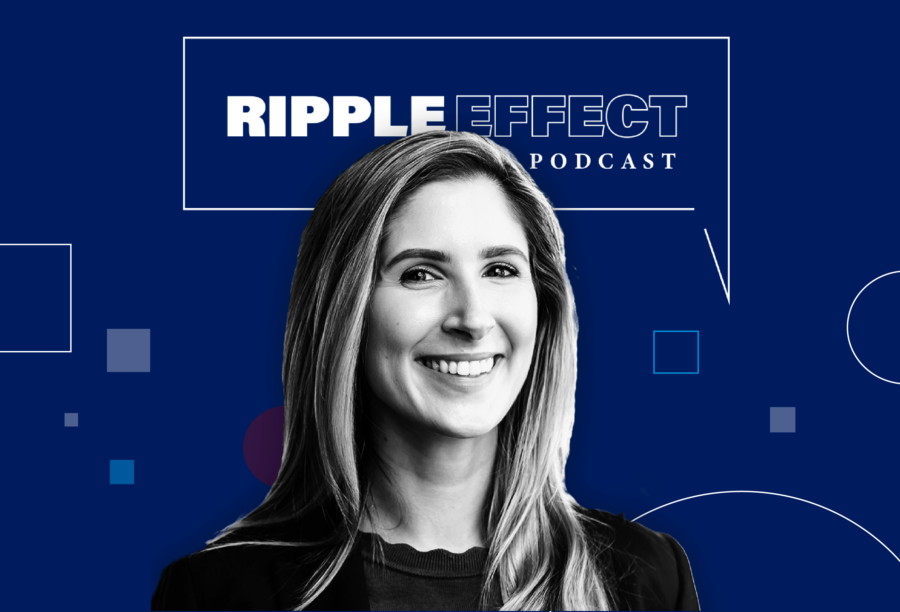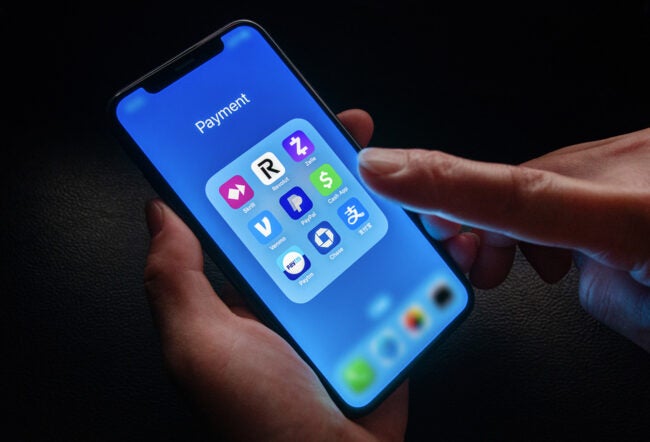Economist Sasha Indarte talks about her research into the effect of social safety net programs on household debt and creditworthiness, and bias in the bankruptcy process. This episode is part of a series on “Financial Literacy.”
Transcript
How Safety Net Programs Impact Household Debt
Dan Loney: Programs like Social Security, Medicare, and unemployment insurance provide an important safety net for families, but having those programs may deter people from saving as much as they probably should.
Sasha Indarte, an assistant professor of finance here at the Wharton School, has taken a deeper dive into this, and she joins us in-studio. Sasha, this is an interesting topic, especially because people don't necessarily associate the availability of these programs to being able to put away savings.
Sasha Indarte: I agree. It's not usually the first thing that comes to people's minds when they think about the social safety net. How is that going to impact people's borrowing? But it turns out, from my research, those programs can have a large interaction with credit markets, and a really big part of the social welfare benefits from these programs can work through credit markets.
Loney: You did some research about the impact of Medicaid and how the number of people eligible in a particular area can have a direct impact on the usage of things like credit cards.
Indarte: In a recent working paper with my co-author, fellow Wharton professor Gideon Bornstein, we studied the impact of expanding Medicaid under the Affordable Care Act, on consumers' use of credit card debt in particular. It's not obvious from economic theory what you would expect. You could get less credit card debt, less debt overall, and perhaps even more savings if, for example, when people fall sick, if they now have insurance, they might not need to borrow or to draw down their savings to afford the cost of that care.
On the other hand, people might have less of what we would call in economics a "precautionary savings motive." This is the idea that you use your own savings. You build up wealth in order to insure yourself against adverse events like job loss or illness.
And finally, credit supply might also react to how people's behavior changes after Medicaid expands. In particular, if people now have insurance and default less often, they are, in a sense, more financially resilient, and creditors might be more willing to lend to them.
Loney: Medicaid helps them feel like they're probably free to spend more in other areas, right?
Indarte: Exactly. This is this precautionary savings piece of people's behavior. If you're going to be able to rely on Medicaid when you become sick, you might have a little bit more leeway to spend, even outside of times when you're not necessarily sick, because you don't need to self-insure that much with your own savings.
Loney: How do social insurance programs can help creditors?
Indarte: When people get access to insurance, we see in our research that people become less likely to default overall. In particular, they are less likely to have debt in collections, which is one of the worst things that you can have on your credit report. This reduction in default, we find, is going to make creditors more likely to approve requests for credit cards. People see an increase in their credit limits. Essentially the supply of credit is reacting to people's improved financial resilience.
Loney: That's interesting, because doesn't that open the door to potential problems with household debt?
Indarte: Yes. In our paper, we see things running in one particular direction overall. We see that Medicaid expands, it's reducing default overall, people's credit scores improve. And despite taking on more debt, their financial capacity, their ability to tolerate having a lot of debt is also improving as a result. But if you did have an expansion in credit without these improvements to people's financial resilience, that's when I would be especially worried about the burden that debt imposes.
Why Inflation Can Lead to More Spending
Loney: Is this similar to what we're hearing about people now relying on their credit cards because of inflation? They may not have as much money in the bank as they would like to, so they're using credit cards to replace that.
Indarte: This could be part of what we're seeing recently with credit cards. Now, inflation is special because one of the economic effects of inflation is that it tends to make people less averse to taking on debt. The idea is if you have fixed amount that you're promising to repay in the future, and you expect more inflation going forward than the real value of what you promise to repay, it's not going to be quite so large because in the future, $1,000 isn't going to have the same purchasing power as it does today.
Loney: When you have that feeling of being able to spend more, that's when the potential for higher debt and bankruptcy pops up.
Indarte: It's hard to say whether people's financial resilience is necessarily going to be worse overall. That's really the key thing to understand whether an expansion of credit is going to be a good or bad thing. Is inflation really helping people to the extent that they maybe anticipate that it will, in terms of making their debt affordable?
Loney: How much is the burden of debt that people carry directly tied to not having the cash on hand?
Indarte: That can be an enormous burden. If you do not have the cash to afford your debt payments, typically people go delinquent. They start to miss some of their payments, and that debt can continue to build up over time. Some types of debt, for example, credit card debt, can continue to build interest, so the overall burden can grow. When people are finding themselves with an overwhelming amount of debt, that's when they might seek something like debt relief through bankruptcy.
The Problem With Bias and Bankruptcy
Loney: You have studied bankruptcy and how it's tied to bias. Can you talk about that?
Indarte: Yes, I have some ongoing research that tries to both document and understand the reason behind racial disparities and the access to the debt relief that bankruptcy provides.
Loney: Where did that start from, in terms of wanting to look at that?
Indarte: There were really two big motivating factors. The first is that bankruptcy is an important source of debt relief for U.S. households. In fact, if you compare the scale of the wealth transfers -- in terms of the debt forgiveness that bankruptcy gives people -- to other social insurance programs, it's bigger than a lot of them. It's on par with programs like unemployment insurance, or even larger.
The second motivating factor beyond the importance of bankruptcy is that there is a big body of financial research that finds a lot of racial disparity in financial market outcomes. We wanted to see if bankruptcy is also one of these areas where you also see racial disparities.
Loney: There was more of an impact on Black Americans than white Americans, correct?
Indarte: Exactly. There are two different types of bankruptcy chapters. About 70% of people file Chapter 7. In that chapter, Black filers are about 3 percentage points more likely to be dismissed. That might not sound like a lot, but there's not a lot of dismissal. That means you go through all the trouble of the bankruptcy process, but then your case is thrown out. You don't get the one good part of the bankruptcy, which is the debt relief. And that's about double the baseline rate for non-Black filers.
In Chapter 13, we see an even larger -- an absolute terms disparity. In Chapter 13, Black filers are about 16 to 17 percentage points more likely to have their case dismissed, which gives them about a 20% relatively higher rate of dismissal.
Loney: Can we determine why the numbers are the way they are?
Indarte: It's really difficult to get at this, so we have to use a clever bit of econometrics in order to try to say something about bias. Now, the reason that it's challenging is when you see a disparity, this could be due to unobserved variables that we're not controlling for. For example, if Black filers have a greater risk of losing their jobs in the future, that could make it hard for them to complete some of the requirements in Chapter 13, and that might explain some of the disparities. So, it could just be these unobservable, noncontrolled-for characteristics versus actual bias.
The crux of our approach to overcome this is we look at differences in the Black/white dismissal gap among Black decision-makers versus white decision-makers in the bankruptcy process. These would be the bankruptcy trustees. The idea is when we do this differencing in comparing, we can net out these omitted factors, and what we're left with is how these two groups make decisions differently.
Loney: For Black people who either file for Chapter 7 or Chapter 13, and they don't get approved, that just adds another layer of angst in trying to get out from under that debt.
Indarte: Exactly. When Black filers are not getting access to bankruptcy, this can have really negative economic and even health consequences. There is work by Will Dobbie and his co-authors, a natural experiment that led to some people receiving Chapter 13 debt relief, and some people didn't get it. What they found is that the ones who got the debt relief were more likely to be employed. They had higher income in the future. They were more likely to be homeowners in the future. They even had improved mortality in the future. So, if there's a racial disparity in access to debt relief, there could be pretty far-reaching consequences from this.
Loney: The research you've done on this topic shows that there are quite a few adjustments that could be made to improve the bankruptcy process for all Americans, correct?
Indarte: I think our research helps illuminate some areas where there is more room for investigation. I think it highlights possible avenues of policies or other changes that we could make if we want to improve and give more equal access to bankruptcy. For example, in Chapter 13, there is a lot more subjective decision-making on the part of the Chapter 13 bankruptcy trustees. They have a really hard mathematical problem where they have to try to forecast a person's income over the next five years.
That can be a difficult task, and when there is subjectivity, there is more scope for bias potentially to influence how they handle cases. Trying to remove some of that subjectivity and maybe automating more parts of the bankruptcy process is one avenue that I can't say for sure would work, but it would be useful for researchers to explore.
Loney: Is there a next natural step that you want to investigate in this process?
Indarte: Yes, I think investigating ways that introduce the use of algorithms, for example, to aid in the decision-making process and see if can reduce bias in bankruptcy. This is something that has been done more in areas such as criminal law with respect to sentencing and things like that. That would be useful for researchers to investigate.



